Posted on March 8th, 2010 by ASEE
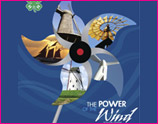 The Power of the Wind Website supplements The Power of the Wind National 4-H Curriculum, designed to help middle school students learn about wind energy and design, build, and test wind-powered devices.
The Power of the Wind Website supplements The Power of the Wind National 4-H Curriculum, designed to help middle school students learn about wind energy and design, build, and test wind-powered devices.
The Website offers videos, links to other wind energy resources, and clever 2-page activities, including building a weather vane, kite design and improvement, and an energy scavenger hunt.
Read More
Filed under: Web Resources | Comments Off on Website: 4-H-The Power of Wind
Tags: Class Activities, Web Resources, Wind Technology
Posted on February 22nd, 2010 by ASEE
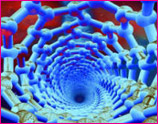
This “Nano Waterproofing” lesson explores how materials can be modified at the nano scale to provide features such as waterproofing and stain resistance. Student teams develop their own waterproofing technique for a cotton fabric and test their design against a fabric that has been altered through nanotechnology applications.
Read More
Filed under: Class Activities, Grades 6-8, Grades 6-8, Grades 9-12, Grades 9-12, Lesson Plans | Comments Off on Lesson: Nano Waterproofing
Tags: Chemical, Class Activities, Design, Grades 6-8, Grades 9-12, Lesson Plans, Nanotechnology
Posted on February 15th, 2010 by Jaimie Schock
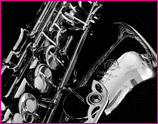 Energy transfer is a central concept in the majority of engineering designs, including designs for musical instruments. In this lesson, students will grasp the concepts of energy and energy transfer, and then apply what they’ve learned by designing and building their own musical instruments.
Energy transfer is a central concept in the majority of engineering designs, including designs for musical instruments. In this lesson, students will grasp the concepts of energy and energy transfer, and then apply what they’ve learned by designing and building their own musical instruments.
Read More
Filed under: Class Activities, Grades 6-8, Grades 6-8, Lesson Plans | Comments Off on Lesson: Energy Transfer in Musical Instruments
Tags: Class Activities, Curriculum, Energy, Lesson Plans, Music engineering
Posted on February 8th, 2010 by Jaimie Schock
 edHelper offers free 2010 Winter Olympics-themed games, puzzles, booklets, activities and reading materials for students. This comprehensive web page features teaching aids in several different disciplines, including math, reading and writing, language development, critical thinking and more.
edHelper offers free 2010 Winter Olympics-themed games, puzzles, booklets, activities and reading materials for students. This comprehensive web page features teaching aids in several different disciplines, including math, reading and writing, language development, critical thinking and more.
Read More
Filed under: Web Resources | Comments Off on Winter Olympics Resources for Students
Tags: Class Activities, Curriculum, Grades K-5, Olympics, Resources for Teachers, Web Resources
Posted on February 8th, 2010 by Jaimie Schock
 Students build a simulated luge track and make predictions about the impact of surface type, wind resistance, size of slope, and shape of luge on their track; test their predictions by conducting several simulated luge runs; and make conclusions about the effects of physical forces on the sport of luging.
Students build a simulated luge track and make predictions about the impact of surface type, wind resistance, size of slope, and shape of luge on their track; test their predictions by conducting several simulated luge runs; and make conclusions about the effects of physical forces on the sport of luging.
Read More
Filed under: Class Activities, Grades 6-8, Grades 6-8, Grades K-5, Grades K-5, Lesson Plans | 6 Comments »
Tags: Class Activities, Curriculum, Grades 3-8, Lesson Plan, Lesson Plans, Teacher Resources
Posted on February 2nd, 2010 by Jaimie Schock
 In this lesson plan, students learn how to find shapes in their world. With the help of the children’s book A Triangle for Adaora by Ifeoma Onyefulu, which shares the experience of a young Nigerian girl as she looks for a triangle around her, students learn the basic shapes, then go looking for them in magazines. They then present their findings to the class as shape researchers. This lesson also incorporates cultural learning.
In this lesson plan, students learn how to find shapes in their world. With the help of the children’s book A Triangle for Adaora by Ifeoma Onyefulu, which shares the experience of a young Nigerian girl as she looks for a triangle around her, students learn the basic shapes, then go looking for them in magazines. They then present their findings to the class as shape researchers. This lesson also incorporates cultural learning.
Read More
Filed under: Class Activities, Grades K-5, Grades K-5, Lesson Plans | Comments Off on Lesson: Shapes of Africa
Tags: Class Activities, Curriculum, Lesson Plans, Mathematics, Teacher Resources
Posted on February 1st, 2010 by ASEE
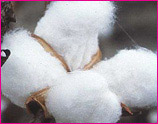 In this activity, students debate who invented the cotton gin. They come to realize the complexity of the seemingly simple historical statement: “Eli Whitney invented the cotton gin.” A follow-up discussion explores the nature of invention, the importance of history, and the nature of historical evidence.
In this activity, students debate who invented the cotton gin. They come to realize the complexity of the seemingly simple historical statement: “Eli Whitney invented the cotton gin.” A follow-up discussion explores the nature of invention, the importance of history, and the nature of historical evidence.
Read More
Filed under: Class Activities, Grades 6-8, Grades 9-12 | Comments Off on Activity: Who Invented the Cotton Gin?
Tags: African-American history, Class Activities, Class Debate, Ideas & Inventions
Posted on January 25th, 2010 by Jaimie Schock
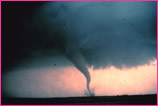 Students learn about various natural hazards and specific methods engineers use to prevent these hazards from becoming natural disasters. They study a hypothetical map of an area covered with natural hazards and decide where to place natural disaster prevention devices by applying their critical thinking skills and an understanding of the causes of natural disasters.
Students learn about various natural hazards and specific methods engineers use to prevent these hazards from becoming natural disasters. They study a hypothetical map of an area covered with natural hazards and decide where to place natural disaster prevention devices by applying their critical thinking skills and an understanding of the causes of natural disasters.
Read More
Filed under: Class Activities, Grades K-5, Grades K-5, Lesson Plans | 1 Comment »
Tags: Class Activities, Curriculum, Lesson Plans, Resources for Teachers, Teaching Aids
Posted on January 5th, 2010 by ASEE

The Running Dry Website offers a number of helpful resources for educators, including: background information, classroom activities, “ten ways to save water,” and “more tips on saving water,” and a list of online resources.
Read More
Filed under: Web Resources | Comments Off on Website: Running Dry – Water Awareness
Tags: Class Activities, Conservation, Environmental science, Water, Web Resources
 The Power of the Wind Website supplements The Power of the Wind National 4-H Curriculum, designed to help middle school students learn about wind energy and design, build, and test wind-powered devices.
The Power of the Wind Website supplements The Power of the Wind National 4-H Curriculum, designed to help middle school students learn about wind energy and design, build, and test wind-powered devices.









 Energy transfer is a central concept in the majority of engineering designs, including designs for musical instruments. In this lesson, students will grasp the concepts of energy and energy transfer, and then apply what they’ve learned by designing and building their own musical instruments.
Energy transfer is a central concept in the majority of engineering designs, including designs for musical instruments. In this lesson, students will grasp the concepts of energy and energy transfer, and then apply what they’ve learned by designing and building their own musical instruments. 
 Students build a simulated luge track and make predictions about the impact of surface type, wind resistance, size of slope, and shape of luge on their track; test their predictions by conducting several simulated luge runs; and make conclusions about the effects of physical forces on the sport of luging.
Students build a simulated luge track and make predictions about the impact of surface type, wind resistance, size of slope, and shape of luge on their track; test their predictions by conducting several simulated luge runs; and make conclusions about the effects of physical forces on the sport of luging. In this lesson plan, students learn how to find shapes in their world. With the help of the children’s book A Triangle for Adaora by Ifeoma Onyefulu, which shares the experience of a young Nigerian girl as she looks for a triangle around her, students learn the basic shapes, then go looking for them in magazines. They then present their findings to the class as shape researchers. This lesson also incorporates cultural learning.
In this lesson plan, students learn how to find shapes in their world. With the help of the children’s book A Triangle for Adaora by Ifeoma Onyefulu, which shares the experience of a young Nigerian girl as she looks for a triangle around her, students learn the basic shapes, then go looking for them in magazines. They then present their findings to the class as shape researchers. This lesson also incorporates cultural learning. In this activity, students debate who invented the cotton gin. They come to realize the complexity of the seemingly simple historical statement: “Eli Whitney invented the cotton gin.” A follow-up discussion explores the nature of invention, the importance of history, and the nature of historical evidence.
In this activity, students debate who invented the cotton gin. They come to realize the complexity of the seemingly simple historical statement: “Eli Whitney invented the cotton gin.” A follow-up discussion explores the nature of invention, the importance of history, and the nature of historical evidence. Students learn about various natural hazards and specific methods engineers use to prevent these hazards from becoming natural disasters. They study a hypothetical map of an area covered with natural hazards and decide where to place natural disaster prevention devices by applying their critical thinking skills and an understanding of the causes of natural disasters.
Students learn about various natural hazards and specific methods engineers use to prevent these hazards from becoming natural disasters. They study a hypothetical map of an area covered with natural hazards and decide where to place natural disaster prevention devices by applying their critical thinking skills and an understanding of the causes of natural disasters.